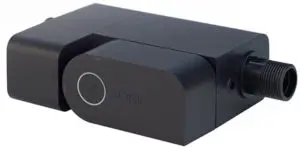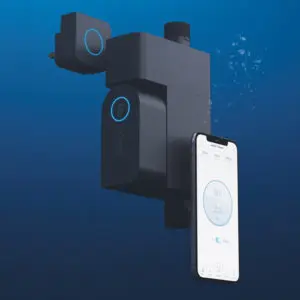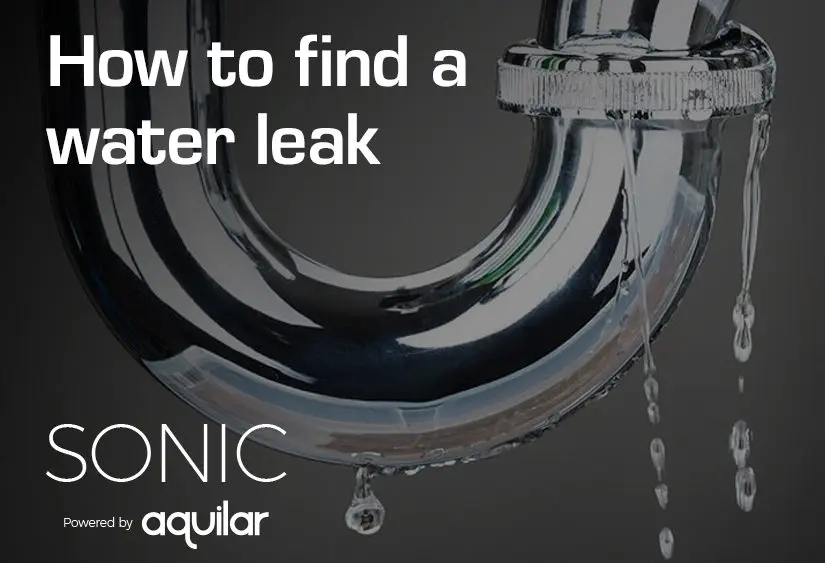 Water leaks are easy to detect, right? You’ll come home to water leaking all over the floor or a steady stream of drips from the ceiling. Unfortunately, it’s not always that simple – water leaks can be silent, slow to show, and difficult or impossible to detect before the damage is done. Here at Aquilar, we’ve got your back – this is our go-to guide for playing detective and tracking down those wasteful water leaks in your home, wherever they’re hiding.
Water leaks are easy to detect, right? You’ll come home to water leaking all over the floor or a steady stream of drips from the ceiling. Unfortunately, it’s not always that simple – water leaks can be silent, slow to show, and difficult or impossible to detect before the damage is done. Here at Aquilar, we’ve got your back – this is our go-to guide for playing detective and tracking down those wasteful water leaks in your home, wherever they’re hiding.
First things first – do I have a water leak?
One of the easiest ways to work out if you have a water leak is to get intimate with your water bill. Water bills come out of your account automatically and you try not to worry about it too much – you can’t live without it after all, and here in the UK you don’t get to choose your supplier (yet) so there’s no shopping around to be done. But the savvy among you will start to notice if those water bills are creeping up – and it’s a dead giveaway that something is not quite right.
A quicker solution for the impatient, go-getters among you is to use your water meter (if you have one) to test your water use in real time. Just follow these simple steps: find your meter and take a note of the reading (or take a picture on your smartphone, it’s 2019). Now stop using any water anywhere in your home, for at least three hours. We suggest you pick an appropriate time for this, i.e. not right before your better half wants to take a relaxing bath. After the long drought check the meter again – if you can see a difference in readings then hey presto, water was flowing somewhere and you’ve almost certainly got yourself a water leak somewhere.
Is the water leak inside your home?
Now we know we’ve got a leak, let’s work out where to start looking. A leak in the driveway or in the garden can cause almost as much of a headache as one inside the house. Find your home’s main shut-off valve or stop tap (it’s often under the kitchen sink); rotate the valve to shut off the water – for most valves, clockwise is closed (righty tighty, lefty loosey). Repeat the same method as above and check your meter reading again. If there’s no change, the leak is downstream of the stop tap, so it’s inside the house. If the meter has changed, water must be flowing somewhere downstream of the stop tap, so it’s likely to be in the driveway or garden.
Locating that water leak
Now it’s time to play detective and locate that leak. Things are going to get a little dirty, so you probably want to take off your Sunday best, grab some gloves and get ready to do some crawling. If that doesn’t sound like much fun, we do have an alternative suggestion!
Toilet water leaks
There’s a clever trick to help determine if you have a water leak in your toilet: simply remove the tank lid and place a few drops of food colouring in back of the toilet tank. Wait about 30 minutes, without flushing. If the water in the toilet bowl is clear, you know no water is leaking through. If you see food colouring in the bowl you have a leak. Either way, flush it a couple of times to move the dye through once you’re done or you might stain the tank!
Check all the rubber parts in your toilet. Rubber perishes and wears away over time, so rubber seals are a prime culprit. It could also be an excessively high water level causing that leak – if the water is too high in the toilet tank and is spilling into the overflow tube, the water level can be adjusted by turning the adjustment screw or by very gently bending the float arm down so that the water shuts off at a level below the overflow tube.
Sink and bathtub water leaks
Taps also have moving parts and perishable seals, and if you live in a hard water area calcium can build up inside them and aggravate problems. The ‘flexible hoses’ that connect taps to the rest of your copper or PVC plumbing are also really prone to failure and, because they’re typically squirrelled away in joinery or under the bathtub, any problems can go unnoticed until real damage has been done.
It’s worth having a good look under sinks from time-to-time and under your bath if the design allows it. If you’re unlucky it’s tiled in but most baths have a removable panel that you can pry off to inspect underneath. Go slowly and carefully, they’re a little prone to cracking. Look for retaining screws or clips. You’re looking for dark stains or the strong smell of damp (a little damp is normal). You can test the seals around your bathtub and sinks by squeezing a little water on them from a wet sponge while you watch for leaks below – shining a bright torch can also reveal cracks and holes. Leaking taps are usually caused by a worn rubber washer which you can replace yourself. You will usually have to take apart the tap to do this (but do remember to turn the water off and run the pressure down first by opening the tap).
Washing machine and dishwasher water leaks
Washing machines and dishwashers are another classic place for leaks to start, particularly the flexible hoses round the back. The plumbing around white goods gets all kinds of abuse – hot and cold water causing expansion and contraction; detergents and chemicals and a whole lot of vibration. Washing machines are often flush-fitted into joinery in kitchens or utility rooms which can hide problems until they manifest as visible damage. If your kitchen is of the fitted variety, a single damaged cabinet can often mean replacing the whole lot – which is a huge pain and can even result in your home being deemed ‘uninhabitable’ while the works take place, meaning you’re off to alternative accommodation for a few weeks.
Wastewater leaks
Wastewater or ‘grey water’ leaks are much trickier to detect. Mains fresh water is delivered under pressure, so leaks tend to be more obvious and immediate. Wastewater flows under gravity, so leaks are slower and much harder to spot. Bath and shower traps are prime candidates; they get a lot of abuse from being under foot and particularly if you have kids they can be high-traffic areas! Check around pipes for discolouration or signs of damp, use your nose and try the torch trick to locate small gaps and holes. If seals are discoloured or starting to detach it’s generally worth engaging in a little preventative maintenance and it’s something even the most average DIYer can undertake. If you’re ever in the position of fitting a new kitchen or bathroom, think about access for wastewater pipes – it’s surprising how many shower trays are tiled in and there’s no way to inspect or fix wastewater leaks.
Boiler water leaks
If you have a modern combi-boiler, you can’t really miss it if it springs leak. In a lot of modern homes boilers are housed in cupboards without floors which is nominally so that you can smell any escaping gas (which is heavier than air) – but it also makes any escaping water very apparent. Combi-boiler leaks can be due to excess pressure – there’s normally a gauge on the front with a green band indicating the safe operating pressure. Boilers are designed to vent if they get outside this range but limescale can jam the release valve and cause the pressure to build up higher than it should. Corrosion or component failure is the other major cause and, unless you’re very handy, it’s usually time to call a professional.
The older style hot water cylinders that live in airing cupboards or, heaven forbid, in the loft, can be a problem waiting to happen – they’re hidden away so you’re less likely to notice a failure brewing and, if they do spring a leak, they can vent water through multiple floors and ceilings and cause a real headache. Look around the base of the tank for staining or signs of damp; most have insulating jackets that you need to pull aside to get a clear look. Hot water cylinders are like big radiators so slow leaks can intermittently dry out and reappear as pressure and temperature fluctuate – any stains beneath them might be a sign of historical damp and are probably worth investigating. Inspect the parts you can see for signs of corrosion, particularly around the hose connections and joints.
Leaks in walls and ceiling cavities
If a pipe in a wall or ceiling has sprung a slow leak it can be really hard to find. You’re looking for peeling or blistering wallpaper or paint, or a slight sagging in walls and ceilings. If your electrics randomly blow for no apparent reason, that can be an early warning that water has made its way into your downlights and pendants. Over time it’ll become clearer and clearer as a big damp patch or even a drip but, ideally, you want to catch it before that stage! Professionals often use infra-red cameras to search for them, using the difference in temperature to highlight where the leak springs up. You could spring a couple of thousand for an infra-red camera or, at this point, it is probably worth taking the easy way out:
 Sonic, the simpler way to detect leaks!
Sonic, the simpler way to detect leaks!
If all this sleuthing sounds exhausting, you can get a little help from Sonic – an AI-powered leak detector that covers your whole home. Sonic constantly monitors the flow of water through your pipes so it can identify all kinds of leaks and warn you about them via the companion app. Sonic’s even smart enough to sort your water usage into different categories and appliances so you can take charge of your bill, save some money, and help save the planet too. It’s probably the smartest way to never have to worry about leaks again!
Click here for more information about the Sonic water leak detection system




